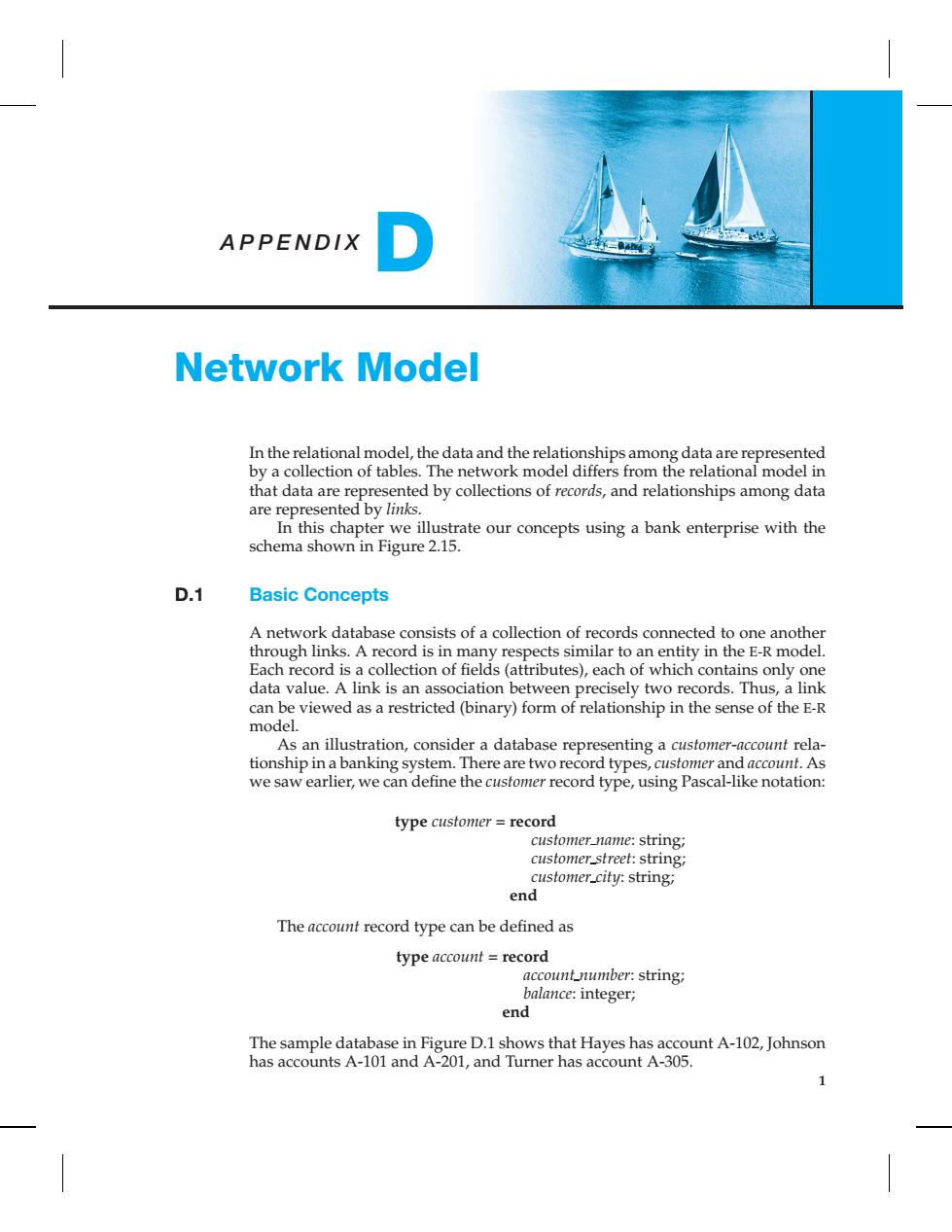正在加载图片...

APPENDIX Network Model In the relational model,the data and the relationships among data are represented by a collection of tables.The network model differs from the relational model in that data are represented by collections of records,and relationships among data are represented by links. In this chapter we illustrate our concepts using a bank enterprise with the schema shown in Figure 2.15. D.1 Basic Concepts A network database consists of a collection of records connected to one another through links.A record is in many respects similar to an entity in the E-R model. Each record is a collection of fields(attributes),each of which contains only one data value.A link is an association between precisely two records.Thus,a link can be viewed as a restricted(binary)form of relationship in the sense of the E-R model. As an illustration,consider a database representing a customer-account rela- tionship in a banking system.There are two record types,customer and account.As we saw earlier,we can define the customer record type,using Pascal-like notation: type customer record customer name:string; customer_street:string; customer_city:string; end The account record type can be defined as type account record account_number:string; balance:integer; end The sample database in Figure D.1 shows that Hayes has account A-102,Johnson has accounts A-101 and A-201,and Turner has account A-305. 1APPENDIX D Network Model In the relational model, the data and the relationships among data are represented by a collection of tables. The network model differs from the relational model in that data are represented by collections of records, and relationships among data are represented by links. In this chapter we illustrate our concepts using a bank enterprise with the schema shown in Figure 2.15. D.1 Basic Concepts A network database consists of a collection of records connected to one another through links. A record is in many respects similar to an entity in the E-R model. Each record is a collection of fields (attributes), each of which contains only one data value. A link is an association between precisely two records. Thus, a link can be viewed as a restricted (binary) form of relationship in the sense of the E-R model. As an illustration, consider a database representing a customer-account relationship in a banking system. There are two record types, customer and account. As we saw earlier, we can define the customer record type, using Pascal-like notation: type customer = record customer name: string; customer street: string; customer city: string; end The account record type can be defined as type account = record account number: string; balance: integer; end The sample database in Figure D.1 shows that Hayes has account A-102, Johnson has accounts A-101 and A-201, and Turner has account A-305. 1